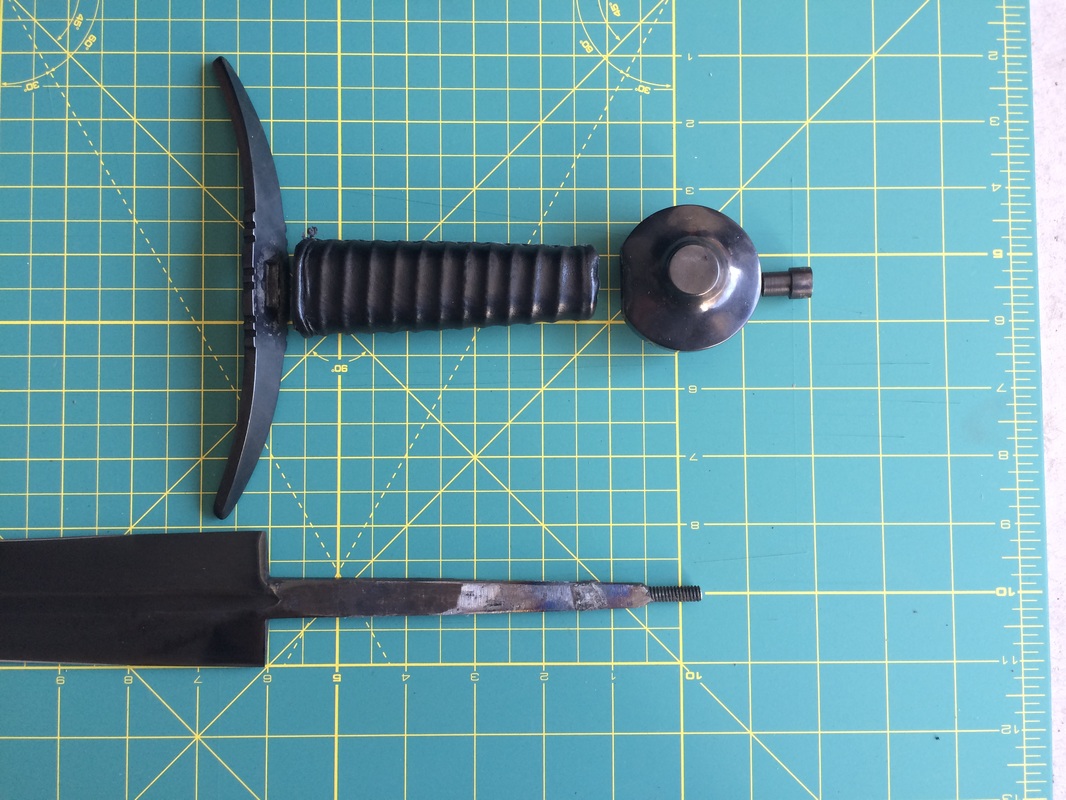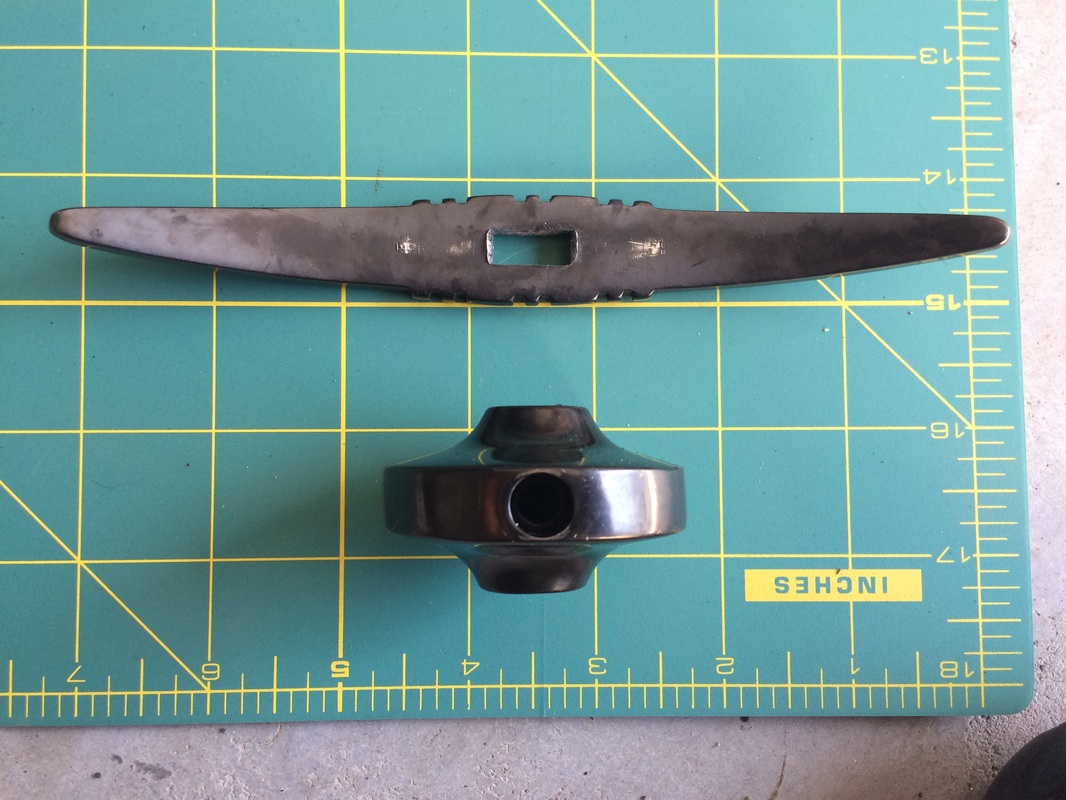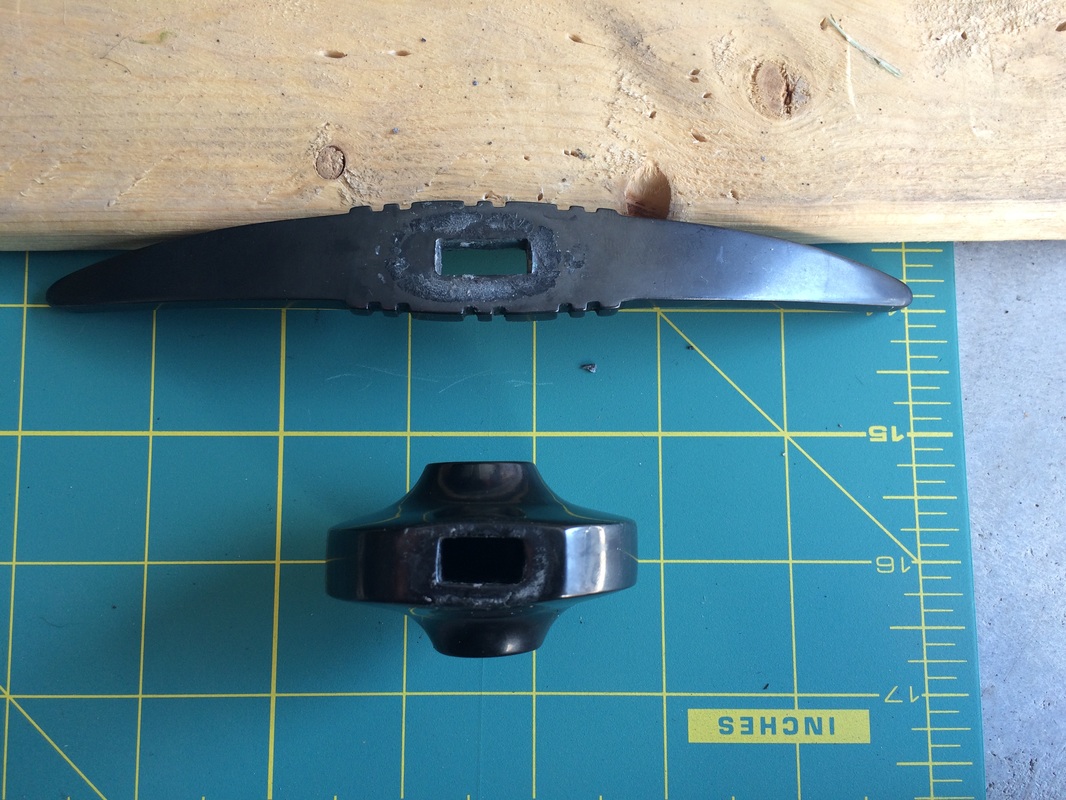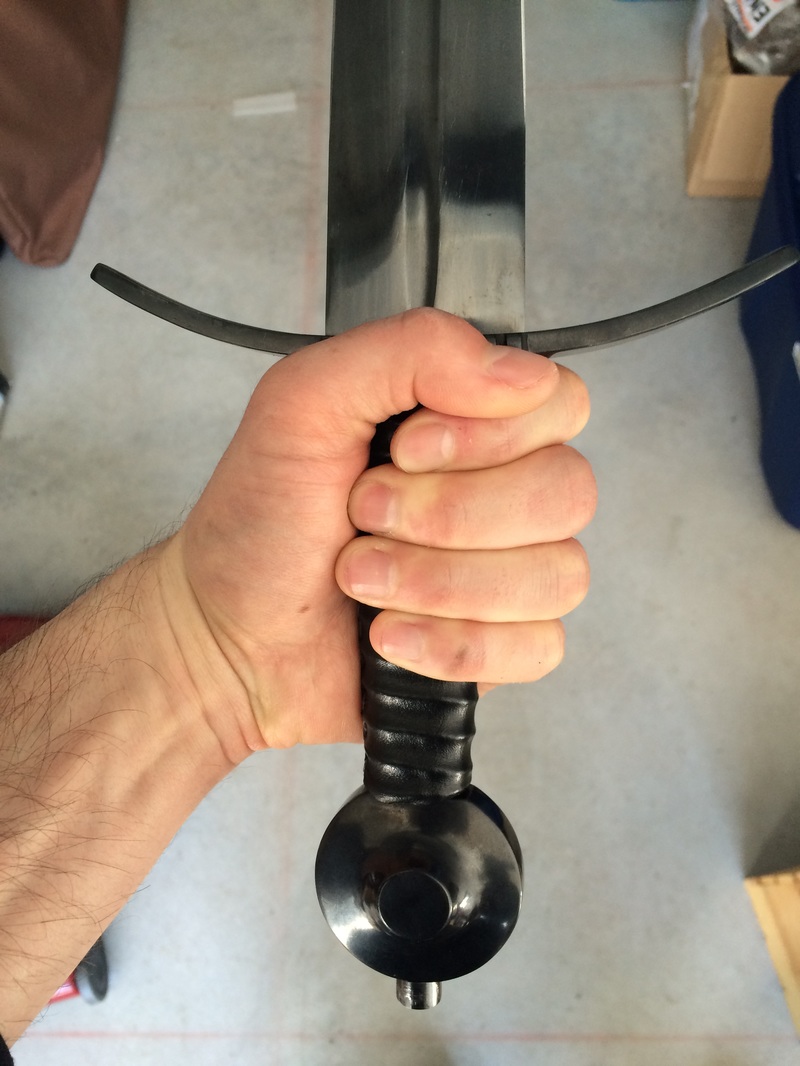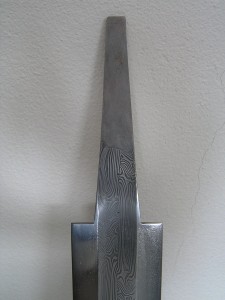(2nd post on Blade Forum - not sure if this should go in Sword Discussion, or CS forum(?)
First Impressions of CS MAA Arming Sword:
Stats on CS website and KnifeCenter are accurate.
Lightest feeling and best balanced CS sword I've held. Point of balance is 4" in front of the guard. Profile, distal taper and fuller are all cleanly executed. I've owned an original Atrim, and handled Albions. This makes a perfect single-hand cut-and-thrust; sidearm, archer's sword, etc. Pommel nut construction holds sword securely, but allows for dismount to customize. I'll be stripping the black finish off the blade. When my mods are completed, the sword may even resemble an historical piece!
Pommel is inlet to accept the rectangular tang stock - sometimes called 'keyed'. Ergo, tang stock and not threaded tang-end takes the shock, and pommel will not rotate. Pommel is extremely well done - shape works well for slipping the grip to extend reach, or grabbing with second hand for greater control.
Comes with acceptable secondary edge bevel. Easy to fix. Out of box: cut cleanly against 1/2 inch dia. branches and slashed apart a rotted out 10 inch dia. birch stump. No damage/warping to blade or edge. No loosening of hilt. Very impressed. Just ordered my BK20 Bundok bowie to customize for off-hand weapon. Should be a lovely pair! Will try to post pics with a follow up review.
First Impressions of CS MAA Arming Sword:
Stats on CS website and KnifeCenter are accurate.
Lightest feeling and best balanced CS sword I've held. Point of balance is 4" in front of the guard. Profile, distal taper and fuller are all cleanly executed. I've owned an original Atrim, and handled Albions. This makes a perfect single-hand cut-and-thrust; sidearm, archer's sword, etc. Pommel nut construction holds sword securely, but allows for dismount to customize. I'll be stripping the black finish off the blade. When my mods are completed, the sword may even resemble an historical piece!
Pommel is inlet to accept the rectangular tang stock - sometimes called 'keyed'. Ergo, tang stock and not threaded tang-end takes the shock, and pommel will not rotate. Pommel is extremely well done - shape works well for slipping the grip to extend reach, or grabbing with second hand for greater control.
Comes with acceptable secondary edge bevel. Easy to fix. Out of box: cut cleanly against 1/2 inch dia. branches and slashed apart a rotted out 10 inch dia. birch stump. No damage/warping to blade or edge. No loosening of hilt. Very impressed. Just ordered my BK20 Bundok bowie to customize for off-hand weapon. Should be a lovely pair! Will try to post pics with a follow up review.


